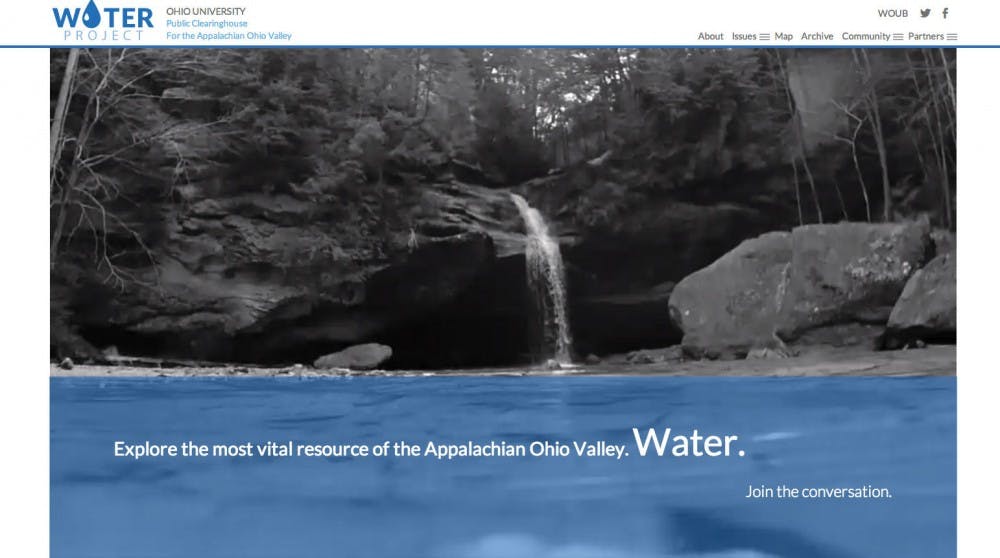The launch event to celebrate the kick-off of the Water Project took place Thursday afternoon in the lobby of the Schoonover Center for Communication.
The launch event to celebrate the kick-off of the Water Project took place Thursday afternoon in the lobby of the Schoonover Center for Communication.
The Water Project is an online public clearinghouse for information about environmental water issues in the Appalachian Ohio Valley. The website, http://ouwaterproject.org, is a multimedia platform that communicates the story of water in the region by explaining where it comes from and threats to its quality through the use of storytelling.
“We believe that modern day storytelling has evolved to a point where very few stories can rely on one discipline in the field of communication,” said Scott Titsworth, dean of the Scripps College of Communication. He said the launch date was delayed to coincide with the start of the school year.
The vision for the Water Project came during the beginning of last year when the university began looking for project ideas to use as a cross-college collaboration opportunity.
“Water quality fit well with us as a university and proximity to the Hocking River and importance of water. It will be a great resource for citizens of Athens County and beyond,” Titsworth said.
Around 50 people from Athens and the OU community were at the event, which was free and open to the public. Titsworth opened the event, remarking how the Water Project first started flowing. Andy Alexander, Scripps Howard Visiting Professional in the E.W. Scripps School of Journalism, spoke next and walked the audience through the website, highlighting maps, the watersheds and their take on different water issues.
Alexander showed a video from the website titled “Drifting: Life on the River.” The three and a half minute video documented a couple who resides on the Ohio River and how vital the cleanliness of water is to residents who live along the River.
“It was a bumpy road. We learned a lot about how to collaborate,” Alexander said.
The website is not only aesthetically pleasing, but full of information concerning water in the Appalachian Region.
“We will have the website become a living, breathing document and not just stagnant,” Titsworth said. “We are excited to be in a partnership with all of you.”
Mountaintop removal, underground mining, hydraulic fracturing and drilling all interfere with the water in the Appalachian Ohio Valley. Fertilizers, pesticides, erosion and livestock waste are all culprits of water pollution in the area.
“It is not a one shot deal,” Alexander said. “Instead it is a platform for explaining the situation and informing people about water quality for many years to come.”
Plans for Part Two of the Water Project are currently underway and could possibly be launched in the spring.
“There are a lot of people on this campus doing work that is focused on the specific concerns of Southeast Ohio and Appalachia,” said Michael Butterworth, director of the School of Communication Studies.
@MeganKHenry
mh573113@ohio.edu






